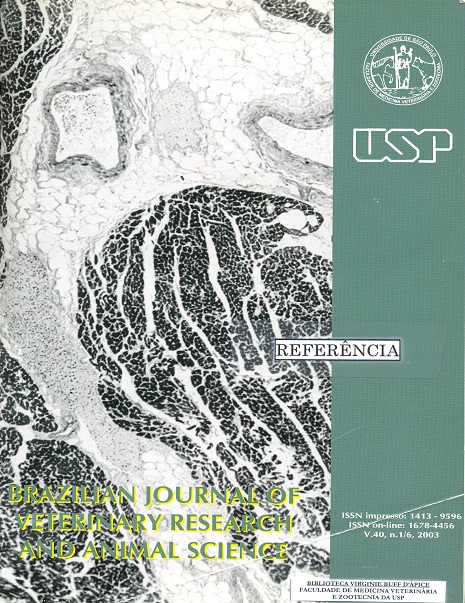Serological survey of antibodies to Toxoplasma gondii in food animals from São Paulo state, Brazil
DOI:
https://doi.org/10.1590/S1413-95962003000400005Keywords:
Toxoplasma gondii, Food animals, Seroprevalence, ELISAAbstract
Toxoplasmosis is one of the most prevalent parasitic infections of man and livestock, and its transmission has usually been attributed to ingestion of undercooked or raw meat from infected livestock, with the infection rate in those animals being an important risk predictor of human disease, high in Brazil and São Paulo State. Looking for this public health problem, we tested serum samples from cattle, goat, sheep and chicken from the State of São Paulo, Brazil, for IgG antibodies to Toxoplasma gondii by enzyme-linked immunosorbent assay (ELISA). Antibodies to Toxoplasma gondii were found in 31.00% (62/200) of sheep, 17.00% (34/200) of goat and 11.00% (22/200) of cattle, without positive sample in chicken. Despite differences in feeding habits of each species, the rate of infection of tested animals could be better attributed to livestock management methods, which improvement could reduce infection.Downloads
Download data is not yet available.
Downloads
Published
2003-01-01
Issue
Section
UNDEFINIED
License
The journal content is authorized under the Creative Commons BY-NC-SA license (summary of the license: https://
How to Cite
1.
Meireles LR, Galisteo Jr. AJ, Andrade Jr. HF de. Serological survey of antibodies to Toxoplasma gondii in food animals from São Paulo state, Brazil. Braz. J. Vet. Res. Anim. Sci. [Internet]. 2003 Jan. 1 [cited 2024 Oct. 31];40(4):267-71. Available from: https://www.revistas.usp.br/bjvras/article/view/11331





